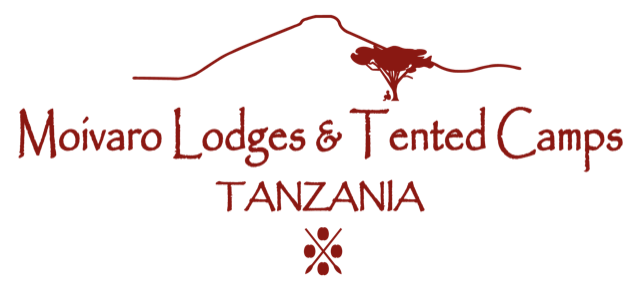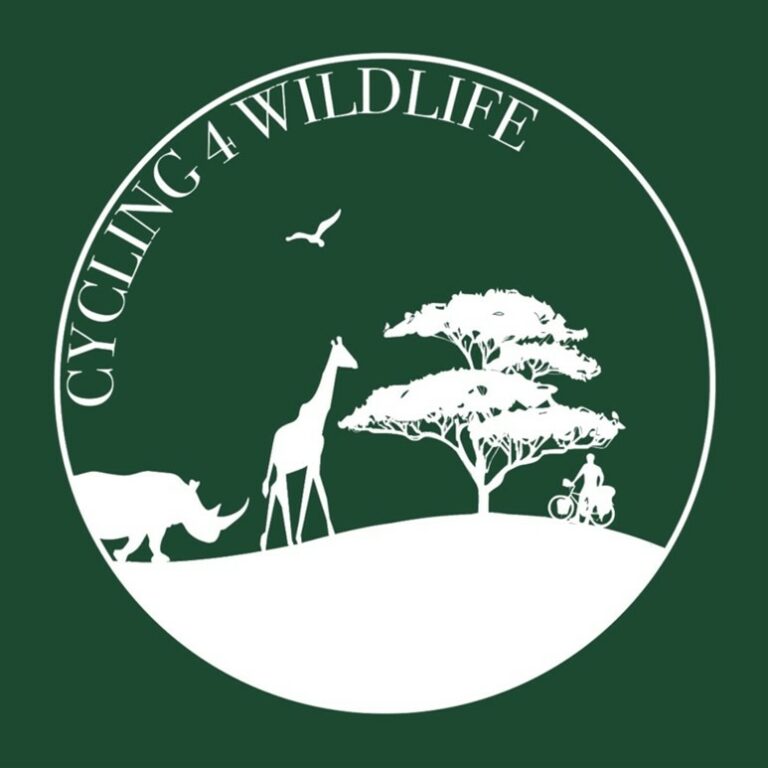Our last night in Liwonde was a restless one, at least in one room of the Chimwala cottage. This time it wasn’t the lions keeping us awake at night, but Thomas, who had fallen ill and was plagued by bouts of vomiting every hour or so. Meanwhile Jan, having secured a private room with a double bed by winning a tense game of toepen, remained unaware of the nocturnal commotion. Since Thomas was in no condition to cycle the leg to Majete with us, we reluctantly decided to leave him behind in Liwonde for a few days of recovery. Fortunately, this was not a major problem, as he could hitch a ride to Majete a few days later with Craig Williams, the operations manager from Nkhotakota. He was spending some days in Liwonde to learn about the law enforcement systems here, and would also make the trip to Majete a few days later. So, even though it was sad we had to leave Thomas behind for a couple of days, we were happy he could make the drive to Majete with Craig, whom by now we considered a friend.
Our ride to Majete was surprisingly swift. Despite the uphill stretch to Blantyre, the subsequent descent into the Shire River valley meant the whole ride only took us two days. By now we had seen much of Malawi. The transformation of the landscape was striking: the further south we ventured, the fewer trees we saw. This far south all we saw were vast treeless landscapes. A few scattered baobabs were the only exception. These were left standing not for their beauty or out of respect for their antiquity, but for the more cynical reason that its soft wood is useless as firewood or timber. It’s simply not worth the effort to cut them down. As we entered Blantyre, the landscape changed drastically: ancient baobabs were replaced by modern office buildings, and rusty bicycles by the latest Range Rovers. Here, one does not imagine oneself in one of the poorest countries on earth. Blantyre is the business centre of Malawi, much like Johannesburg in South Africa. The contrast with Malawi’s countryside could not have been starker. Whereas in Blantyre one have the choice between fine dining restaurants and international fast-food chains, outside the city one finds little but maize and mice. Yes, mice. South of Blantyre we found them everywhere: charred to perfection, including their head, feet, and what I imagine is the best part: the crispy tail.
As we continued our journey toward Majete, the anticipation heightened. About five kilometres from the park’s entrance, we were greeted by a massive billboard depicting a male and female lion. The accompanying text was promising: Welcome to Majete Wildlife Reserve. A story of hope and revival. Clearly this was a park that was proud of itself. Impressive as it was, the billboard was nothing compared to the next encounter. A bit further down the road, we saw a group of cyclists pedaling in opposite direction. First we thought they were riding home from work to the nearby village of Chikwawa, but then they suddenly turned around to accompany us toward the park entrance. As we cycled on, more and more bicycles joined our entourage, creating a proper peloton of over thirty men all full of excitement. Slowly the pace started picking up, and before we knew it we were caught up in a race toward the gate. It was a photo finish, but I think it was the mechanic who came over the line first to clinch victory. In any case, the four of us were humiliated by the Majete crewmembers on their single-speed bicycles, many of whom cycle more than fifty kilometres to and from their work every day. The person who orchestrated this unforgettable welcome ceremony was Rosie, Majete’s funding & reporting manager. After taking a picture with all the cyclists, we rode to our campsite, a beautiful clearing in the middle of Majete’s woodland, where some large marulas offer shade from the powerful sun. We learned that it was under the canopy of these marulas that Majete’s destiny was shaped. On one day in 2002, Anthony Hall-Martin, one of AP’s founders, stood within the shade of these majestic trees. It was here that he envisaged that this small, neglected game reserve tucked away in the bottom of Malawi, had the potential to undergo a remarkable metamorphosis into the conservation triumph that it is today – indeed a testament to hope and revival.
The next day Jan, Huib and I went to HQ, where we met John, the park manager. Like many other of AP’s park managers, John had a long career with South African National Parks (SANParks) before joining African Parks. John was a proud man. ‘I may be biased,’ he declared, ‘but I am convinced Majete is AP’s best managed park.’ I must say, he had some strong arguments to back up his claim: since 2003, Majete has not lost a single high-value species to poaching. In the same time period, it has evolved into Malawi’s premier safari destination, a remarkable feat considering Liwonde’s more convenient location and reputation as the most prominent of Malawi’s parks. To be fair to Liwonde, though, the challenges at Majete are of a different magnitude. Whereas Liwonde is surrounded by over a million people living on its periphery, Majete’s neighbours amount to only a tenth of that. But even here, the pressure is growing. Of the 100,000 people living around the park, 80 percent is under the age of twenty. On top of that, the entire economy is driven by charcoal. As a result, nature around the park is disappearing rapidly. ‘It’s a harsh reality,’ John told us, ‘but nature is simply not part of people’s lives anymore. You four have seen more of African wildlife than 90 percent of the African people. That part of their lives is gone. Maybe their grandfathers saw elephants.’ In recent decades this disconnection has had tragic consequences. In addition to deforestation outside of the park’s boundaries, John explained that poison is a big issue in and around Majete. ‘It’s just part of the landscape these days.’. One especially poignant result of this is the absence of oxpeckers in the park. In a healthy ecosystem, these birds perform a crucial function as they rid large herbivores like rhinos, buffalo and impala of ticks and other parasites. As a result of their absence, the rhinos in Majete are covered in ticks up to the point where their ears are seriously deformed. Fortunately, this does not seem to have a significant effect on their health, but the sight of a rhino with ears like Mike Tyson’s is not the prettiest.
In order to reconnect people and wildlife, Majete’s community extension team is making large-scale efforts of the likes we have also seen in other parks. This includes support for irrigation schemes, fish farming and bee-keeping and, of course, by educating the next generation. However, there are also approaches unique to Majete. For instance, there is the goat pass-on project, whereby a household is offered three goats free of charge. In return, they must give the offspring of these goats to their neighbours, who will then continue to do the same. In this way, Majete hopes to ease the demand for park-based meat. On the second day, we were going to visit a village to view the effects of these programmes, but this was not the only thing we would do. Our conversation with John about our schedule went something like this:
John: Do you guys want to go climb a mountain with the rangers?
Us: Absolutely!
John: Cool. Billiat [the head ranger] will take you after this meeting.
John: Do you guys want to join a lion call-up? They need to collar a male and give two females contraception tonight.
Us: Absolutely!
John: Cool. Do you guys want to track black rhino with some of the rangers?
Us: Absolutely!
John: Cool. You will go the day after tomorrow. Do you guys like birds?
Us: Absolutely!
John: Cool. You will go on a game drive with Samuel. He’s one of the best birders in Malawi.
This was going to be awesome. After our meeting with John we met Billiat and one of his colleagues. We drove to a place from where we started walking in the direction of Majete’s highest peak, named Chimwala (yes indeed, the same name as the highest peak in Nkhotakota and the name of the cliffside camp in Liwonde, meaning “large rock”). The walk was short but full of action. We walked up and down several drainage lines, where the bush was green and thick, and the view limited. Then, suddenly, we were alarmed by the hair-raising sound of an animal screaming for its life. At first we didn’t know what it was, but through a process of elimination we figured it must be a warthog (it was screaming like a pig on its way to the slaughterhouse). A moment later we also heard the growl of a predator. Lions? A leopard maybe? Fortunately Billiat wanted to find out just as much as we did, so we walked in the direction of the sound to find out. For obvious reasons, you can’t just march blindly in the direction of a wild carnivore, so every ten steps or so, we stopped and listened. The warthog was still screaming, but less intensely than it had earlier, as if it was slowly coming to terms with the fact that this was it. But then, just as the sound was dying down, the bush started rustling and the vegetation came alive. The warthog, it seemed, had escaped, and predator and prey were now caught up in a chase through the thicket. Though we couldn’t see anything, our hearts were racing in the midst all this drama. But after a brief explosion of tumult the bush turned quiet once more. ‘I think it was a leopard,’ Billiat concluded, ‘I’m afraid it will go hungry for another day.’
Back at camp we had a moment to relax, before we were picked up by Craig, who worked in Majete as a wildlife manager, monitoring the park’s priority species. Since Craig was only 22 years old, quite skinny and not yet as accomplished as our friend Craig Williams, we decided to refer to him as Craig Lite so as not to confuse the two (This is not meant disrespectfully, as we foresee a very bright future for Craig Lite). On our way out of the park – we drove around the park to enter it again further north – we encountered Thomas and Craig Williams, who were just arriving after a long drive from Liwonde. Thomas, despite still feeling a bit shaky, couldn’t miss out on a lion call-up, so he quickly changed vehicles and joined us in the back of Craig Lite’s Cruiser.
To lure the lions in, we tied the hindleg of a waterbuck to a tree and hung a speaker on a branch above it on which Craig played the deeply penetrating calls of a dying buffalo. Then things unfolded rapidly. Within minutes, a pride of eight, commanded by two big males, were circling around us. In the back of the Cruiser we started wondering what the strategy would be. The plan was to dart two females and one male, but how does one treat those when there are five other lions around? Surely you can’t just jump out of the car and hope for the best? Well, apparently you can. After three accurate shots from Dagmar, the German vet, two lionesses lay asleep next to each other, while a male lay sedated some 20 metres further into the bush. The pride’s remaining females had scattered and were now out of sight, while the other male was pacing about close to his sleeping brother, growling at us as we moved closer. This was not ideal. Dagmar worried that this male might seize the opportunity to kill his brother and gain sole dominance of the pride. To address this potential threat and facilitate the medical procedures, the sleeping male needed to be repositioned nearer to the females. Dagmar hopped out of the car and poked him to assess if he was indeed asleep (not really sure what she would have done in case he wasn’t). As he remained unresponsive, I now deemed it safe enough to jump out of the vehicle myself. Dagmar didn’t like this very much: ‘Noooo! Don’t stand in front of ze lion!’ she screamed as I stood there clumsily, not really knowing what to do. Then she saw the flipflops I was wearing (I had left my shoes with Thomas in Liwonde to minimize the weight on my bike): ‘Oh my Gott! You’re even wearing open schoes! Zis is ze worst!’ However, with the other male not more than thirty metres away from us, there wasn’t much time to debate my footwear. We proceeded to move the 250-kg lion on a stretcher and put him in the back of the Cruiser. Even though there were six of us, this was not an easy task. A few minutes later, though, once we finally situated him next to the females, treatment could commence. Since none of us four had any veterinary experience, we weren’t of much use to Dagmar, but we did get the opportunity to examine lions from close by. It was such a surreal experience. I mean, how often do you get the opportunity to touch claws that can rip one’s face off in a matter of seconds, and to feel those bone-crushing teeth? All the while this was taking place, one of us was standing on top of the Land Cruiser, shining a torch into the darkness to track the movement of the other male, which was still circling around us.
After the females had received contraception and the male was equipped with a new GPS collar, the lions were given a substance that would wake them up again. With a beer in our hands, we watched the lions slowly come back to life. After a few minutes they stood up and, still a bit groggy, waddled out into the bush as if they had spent a long night in the pub. When we lay in our tents later that night, the adrenaline was still racing. It would take a long time before the fatigue finally gained the upper hand.
The subsequent day was of a different pace, though no less interesting. Guided by Dixie, the community extension manager, we visited some local communities. Followed by a parade of singing and dancing villagers, we walked to the tree planting and fish farming projects, intended to provide people with an alternative to park-based wood and protein. Later, under the cool shade of the plantation, we were given an opportunity to ask questions. We asked about tree planting, fish farming, and what they thought of African Parks. At one point, I asked the thirty or so children that had gathered around us: ‘Who of you would like to work for African Parks when they grow up?’ For a moment, it seemed as if Dixie hesitated to translate my words. I wondered, had I asked the wrong question? Did Dixie fear a disappointing response? But when he finally translated the question, the response was nothing short of incredible: one by one, all the kids raised their hands. If ever there was a single measure to gauge the success of twenty years of AP management, this was it.
That afternoon we went out with Samuel, guide at Majete and one of the most enthusiastic birders I have ever seen (and I’ve seen many). Samuel is not just enthusiastic about birding, he’s also highly accomplished. In 2013, he gained publicity with the discovery of a hybrid between two lapwing species (blacksmith and spur-winged, for those of you who are interested), earning him an invitation from the Royal Ornithological Society. Naturally, this set the stage for a game drive that felt more like Samuel’s personal exploration on which we were privileged guests than the usual game drive catered to the guests’ wishes. This style made Samuel unlike any other guide we had met, and in my opinion by far the best one.
After the sun had set we returned to camp, where we shared some beers with Craig and Wayne. Wayne is a trails guide who was in Majete to instruct the rangers on how to handle dangerous game encounters when on patrol. Coincidentally, Wayne taught me the same skills seven years ago, when he was my trails instructor down in Makuleke. Tucked away in the northernmost part of the Kruger National Park between the Limpopo and Levuvhu Rivers, Makuleke is one of the remotest places in southern Africa. So remote, in fact, that we had no idea who had won the US Presidential election when we were there in November 2016. More than a week after election night, it was Wayne who came to our camp and told us the devastating news that Donald Trump had won. However many memorable walks I had with him, I will always remember him for this.
The next day we were supposed to join Craig Lite on a day of his work. ‘I’m going to make it flippin’ memorable!!’ he had told us. In the end, we sat by his office for most of the day. That wasn’t his fault, though, as Craig was occupied with hosting a group of journalists from all over the world that came to Majete in light of its 20-year anniversary under AP management. In the afternoon, when we were busy preparing for our departure the following day, we discovered a major problem. The rim of Huib’s rear wheel was completely shattered. Already a week earlier, we had discovered some cracks in our rims that we think resulted from the violent trembling on gravel roads, but now they had become so severe that Huib’s wheel had lost all its shape and now needed a new one. The problem was that we were going to cycle one of the remotest stretches of our trip, through Mozambique, where he surely would not be able to find a new rim with European dimensions. We had no idea what to do. Take a bus to Harare, try to find a new wheel there, and wait there for a week for the three of us to arrive? That did not seem very appealing. Instead, we decided to stick together and take a transfer to Lilongwe, Malawi’s capital, where we figured we could sort something out. The leg from Lilongwe to Matusadona, our next park, was significantly longer than the route from Majete, but if it meant sticking together, it was certainly the better option. That evening, prior to dinner at the beautiful Thawale Lodge, we told John of our new plan. He looked over to Rosie and asked: ‘What do you think? Shall we help these boys?’ After she responded affirmatively, he grinned and rose from his seat to arrange for a driver to take us to Lilongwe. At first, we felt we couldn’t accept this generous offer, but John insisted: ‘It’s not a problem. Isaac will take you, and he’s happy because he will have a chance to visit his parents in Lilongwe.’
This kind gesture confirmed our existing belief: that Majete is run like a tight-knit family. When John boasted about the achievements of his park a couple of days earlier, it wasn’t self-promotion; rather, it was an expression of pride in his family. As I’m writing this, the news has just come out that Majete’s team is nominated for the prestigious African Conservation Awards. Indeed, John has every right to be proud.

















